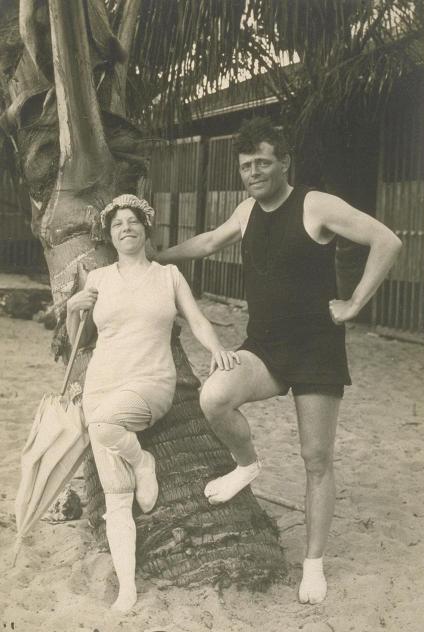 |
| Bill & Dora were married in the oldest Catholic church in Kansas City -- St. Patrick's, which was built in 1875, seen in this 1985 painting by George Lightfoot (Submitted by Dr. Roland Sabates) |
Bill & Dora's Marriage License -- May 21, 1920. Their ages appear to be entered incorrectly: Bill was 34 (not 33) and Dorothea was 21 (not 24).
|
 |
| Kansas City Star - 1921 |
 |
| The Kansas City Post - 1921 |
Resulting from an earlier story about C.A. Wilimovsky's upcoming July 25 trip to the Virgin Islands, The Post reported on a letter received by the artist: "It was signed Hale T. Hendrix, Kingsville, Mo. It contained a cameo of one young man's life and aspirations for adventure... 'Now what I would like to do is to go along in any capacity you may think fit. I can handle a typewriter or swab a deck and will do anything to make myself useful to pay you for taking me along... I can run up in the flivver [automobile] for an interview at any time, and can be ready to leave at a moment's notice, should you reply favorably.' ...Mr. Wilimovsky has not yet responded to the letter."
 |
| Entrance to Harbor-Master's House, St. Thomas - Drypoint Etching, 1922 |
 |
| Harbor-Master's Balcony, Virgin Islands - Linoleum Cut, 1922 |
 |
| Blackbeard's Castle, Virgin Islands - Linoleum Cut, 1922 |
 |
| At the Kansas City Art Institute, Kansas City, Missouri |
Kansas City Star - June 21, 1922 -- WILIMOVSKY TO QUIT SCHOOL -- Disagreement Over Teaching Methods Given as Cause
Charles A. Wilimovsky, for eight years head of the department of drawing and painting at the Kansas City Art Institute, resigned the position today. He will continue at the school until October 1, when his present term expires.
Mr. Wilimovsky said today that his reason for refusing to sign the contract offered him for next year centered about questions of ethics in the conduct of his classes.
"My resignation is final," said Mr. Wilimovsky, "in view of the wide difference between my views of art and the conduct of art classes, and those of the director of the institute. It would inevitably lead to friction. I have a deep affection for Kansas City and Kansas City's splendid ideals as expressed in her memorial plan, and for the institute, in which I have done my best to develop the fine art talent that has come to me."
 |
| First appearance of Tarzan & Jane: The All-Story, October, 1912. Right: First Canadian edition of Tarzan of the Apes, 1914. |
The most enduring memory of these characters comes from the films starring Johnny Weissmuller, a world champion swimmer who won five gold medals in the 1924 & 1928 Olympic Games.
"Tarzan and His Mate" 1934
Johnny Weissmuller & Maureen O'Sullivan
The Artist and his Wife Painting - 1923
 |
| Bill and daughters Marguerite, Florence & Jain, with Dr. William Thompson (Marguerite Thompson's father) - Chicago 1924 |
 |
| Bill's older brother, Joseph Charles Wilimovsky (1882 - 1976) |
 |
| At the Art Institute, Chicago - Winter 1925 |
 |
| Hillside Trees - 22 1/4" x 26 1/2" |
... Wilimovsky's paintings are landscapes of Wisconsin, some made in the wonderful Wisconsin woods, in the Menominee Indian reservation, which fortunately remains untouched by the hands of the greedy lumberman. Others are of the Indian country around Taos, N.M. Mr. Wilimovsky also shows a group of wood block prints in the entrance corridor, containing scenes in the Virgin Islands, New Orleans, Wisconsin, the Fox river valley, the Apostle islands, and in New Mexico.
 |
| Balcony, New Orleans |
 |
| Ranch House Near Taos, N.M. - 9 1/2" x 7 1/2" |
 |
| Hotel, New Orleans - 9 1/2" x 7 1/2" |
 |
The Four Wilimovsky Girls
Jain & Charmian - from Dorothea Brazzel,
Marguerite & Florence - from Marguerite Thompson.
Note on the Back: "Taken at Jackson Park [Chicago] Aug 28, 1928"
|
 |
| Note on Back by the Artist: "M. Charmian Wilimovsky 9 mo. 1 week Chi Ill." |
 |
| Charmian & Jack London in Hawaii, 1915 |
It is interesting to consider the origin of each child's name. Their first girl was most likely named for Florence, Italy, where Bill & Margie first met. Of course, Marguerite was named after her mother.
The daughters of Bill and Dorothea were Jain (probably inspired by the Tarzan books) and Charmian, usually shortened to Charm, was also connected to another writer of adventure stories.
Charmian (often misread as "Chairman") was the name of Cleopatra's handmaiden & advisor at the time of her death. But most significantly, it is the name of the second wife of Jack London, a popular author at the turn of the 20th century. He is best known for his novel "The Call of the Wild" published in 1903.
Wilimovsky's Daughters in 1929: Florence, Charmian, Marguerite, Jain
(Babka Photo Studio, Cicero, Illinois, USA) |
 |
| Florence Wilimovsky - 1929 |
 |
| Florence - April 1929 |














































